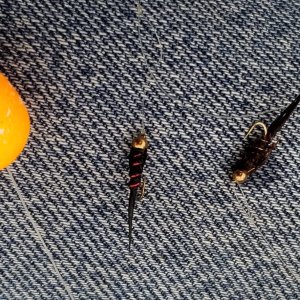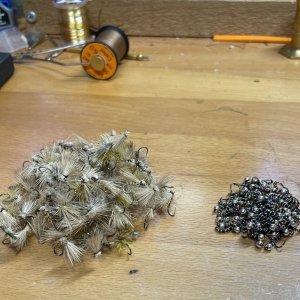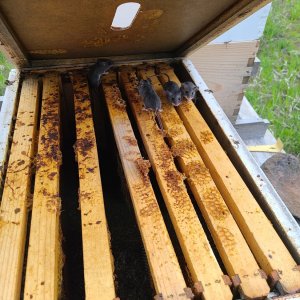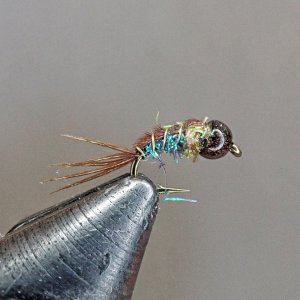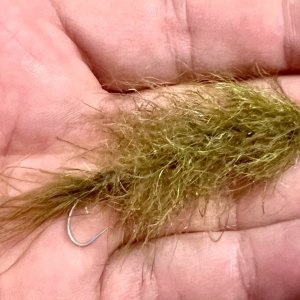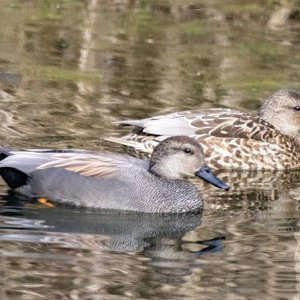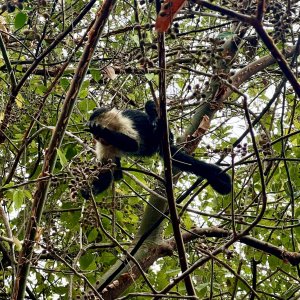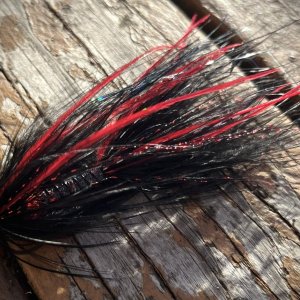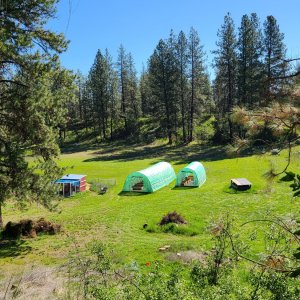Thanks.Registration in the boat.
You are using an out of date browser. It may not display this or other websites correctly.
You should upgrade or use an alternative browser.
You should upgrade or use an alternative browser.
Dirtbag sockeye
- Thread starter Wanative
- Start date
Saw a Sockeye splashing in the skagit (Unfortunately on an inaccessible bank). It had to be between 6-8lbsUnreal, the fish are the biggest I've seen up there.
5 more in the boat yesterday.
Home tied rig doing a lot of damage this year.
View attachment 72897
Do you troll or strip? I might be able to knock out all 5 salmon species on the fly this year if I work hard at itFull sinker and two blood worms 5-6” apart works (sometimes). Hard to go deep tho when they are to deep. Flash flies in red/silver also works. Nice day.
Nice work on the sockeye Fred.
As far as getting on the road early, always fun to do except when tweaked out zombies jump out in front of your rig…..
SF
I fished it before the lake opened and saw several jumpers.Saw a Sockeye splashing in the skagit (Unfortunately on an inaccessible bank). It had to be between 6-8lbs
I've caught a few random sockeye in my life but have never actually targeted them. I've always been curious about the methods used.
How do you guys fish those setups? They look like a combination of drift rigs I fished for steelhead growing up, and plunking gear. But then there's various blades and other things that make me think maybe its a slow troll kind of thing? I dunno. Always thought it looked like a really unique fishery that would be fun to try some day.
How do you guys fish those setups? They look like a combination of drift rigs I fished for steelhead growing up, and plunking gear. But then there's various blades and other things that make me think maybe its a slow troll kind of thing? I dunno. Always thought it looked like a really unique fishery that would be fun to try some day.
Yes, that's how it's done. Slow trolling. It started out in Lake Washington around 1970 with U-20 red or silver flatfish behind a chrome flasher. Then a pair of red hooks behind a flasher. I haven't done it for a few years, but I used a pair of red hooks with a pink or purple mini hoochie, a small bead and a smilie blade, and a dyed pink or purple shrimp on the lower hook. It seems like the key is having something on a short leader (11 - 13") that gets its action from the back and forth motion of the flasher. Oh, and I make my slow troll even slower by deploying a drift sock even with my small 4 hp kicker just idling. When they're on the snap, they'll hit it. If the sockeye aren't biting, then nothing works.maybe its a slow troll kind of thing?
Sockeye fishing in a lake is basic kokanee fishing on steroids. A "fly" rig similar to on Wanative pictured behind a dodger on a heavy short leader is money. You can fish that "fly" with a smilie blade as pictured or by itself. If you want to up the number of bites add a small piece of cured shrimp to one or both hooks. My go to "cured shrimp" recipe is to buy 1/4 pound of prawns at the local Safeway, peel the shrimp and cut into pieces at each segment line, dye with fire brine to color adding some salt and borax to cure. Keep the bait refrigerated (should be good for a couple weeks). I'll sometimes cut the larger pieces in half after the curing process.
Some other Curt's hints to successful sockeye fishing. Try tying your sockeye flies or other rigs with drop shot hooks, usually in a size 1/0. Doing so should up your landing ratio significantly. One year using that bait and drop shot hooks the boat had 28 bites hooking 26 and landing 25. The sockeye like kokanee tend to be boat shy so it pays to put your gear a distance behind the boat, use the basic 100 foot rule. That rule is that the depth plus distance behind the boat should add to 100 feet or more. If fishing with downriggers it pays to watch the depth finder and fish at the same depth as the fish marks and typically the shallower fish will bite better than the deeper fish but always have rods fishing at different depths until the fish tell you which depth is the best. Like some of the other salmon sockeye are lure followers often following your rig for some distance. In such situations sudden direction or speed changes will often trigger a bite. If your gear goes through a school without getting bit trying raising or dropping the downrigger 10 feet or so. Another advantage of using a decent drop back on the downrigger you can quickly adjust the depth of marks/schools above or below the depth being fished. If your gear is at say 50 feet and you see fish at 40 quickly bring the gear up to 40 feet so that when the gear reaches the school you marked below the boat your gear will be at the appropriate depth.
If the boat is fishing multiple rods when a fish is hooked slow or even stop leaving the other rods hanging. A number of times 2 of use fishing 4 rods (2 rod endorsement) by slowing down we would have multiple hook-ups on occasion landing "quads". The Baker sockeye are great fighting fish often running and jump as wildly as the best ocean coho. I always use 2 feet of heavy bumper line in front of the dodger (helps to prevents the dodger from cutting the line in event the fish tangles your gear. Use heavy leaders on your flies - not only does it provide a safety edge once the fish is hook the heavy leader (20 30 #) helps transfer the dodge movement to your gear. One the fish is hooked allowing it to run rather than horsing it helps to prevent hook pull outs. Trolling speed is key and slower is better than faster in most cases. A good pace to start is 1.1 to 1.6 mph. Watch other boats and adjust your speed to what the successful anglers are using or vary your speed until the fish tell you when you hit that sweet spot.
As mentioned the sockeye are boat shy and it is not uncommon after the fleet pounds on them for a hour or so for they schools to move away from the boats (often out towards the center of the lake). When fishing away from the shoreline on water like Baker I always pick a piece of driftwood and when we hook and fish I will drop it over board to mark the spot and once the fish is landed we can circle back through the same area. Final as fish pressure takes it tolls over a few days the bite often slows. when that happens downsizing your presentation can pay dividends. I sometimes will go to bare hooks with just a small piece of shrimp.
That Baker sockeye fishery is a wonderful experience in a grand setting, with feisty and taste fish. It is always a fish made for those that like to tinker with gear and presentation.
Have fun and tight lines
Curt
Some other Curt's hints to successful sockeye fishing. Try tying your sockeye flies or other rigs with drop shot hooks, usually in a size 1/0. Doing so should up your landing ratio significantly. One year using that bait and drop shot hooks the boat had 28 bites hooking 26 and landing 25. The sockeye like kokanee tend to be boat shy so it pays to put your gear a distance behind the boat, use the basic 100 foot rule. That rule is that the depth plus distance behind the boat should add to 100 feet or more. If fishing with downriggers it pays to watch the depth finder and fish at the same depth as the fish marks and typically the shallower fish will bite better than the deeper fish but always have rods fishing at different depths until the fish tell you which depth is the best. Like some of the other salmon sockeye are lure followers often following your rig for some distance. In such situations sudden direction or speed changes will often trigger a bite. If your gear goes through a school without getting bit trying raising or dropping the downrigger 10 feet or so. Another advantage of using a decent drop back on the downrigger you can quickly adjust the depth of marks/schools above or below the depth being fished. If your gear is at say 50 feet and you see fish at 40 quickly bring the gear up to 40 feet so that when the gear reaches the school you marked below the boat your gear will be at the appropriate depth.
If the boat is fishing multiple rods when a fish is hooked slow or even stop leaving the other rods hanging. A number of times 2 of use fishing 4 rods (2 rod endorsement) by slowing down we would have multiple hook-ups on occasion landing "quads". The Baker sockeye are great fighting fish often running and jump as wildly as the best ocean coho. I always use 2 feet of heavy bumper line in front of the dodger (helps to prevents the dodger from cutting the line in event the fish tangles your gear. Use heavy leaders on your flies - not only does it provide a safety edge once the fish is hook the heavy leader (20 30 #) helps transfer the dodge movement to your gear. One the fish is hooked allowing it to run rather than horsing it helps to prevent hook pull outs. Trolling speed is key and slower is better than faster in most cases. A good pace to start is 1.1 to 1.6 mph. Watch other boats and adjust your speed to what the successful anglers are using or vary your speed until the fish tell you when you hit that sweet spot.
As mentioned the sockeye are boat shy and it is not uncommon after the fleet pounds on them for a hour or so for they schools to move away from the boats (often out towards the center of the lake). When fishing away from the shoreline on water like Baker I always pick a piece of driftwood and when we hook and fish I will drop it over board to mark the spot and once the fish is landed we can circle back through the same area. Final as fish pressure takes it tolls over a few days the bite often slows. when that happens downsizing your presentation can pay dividends. I sometimes will go to bare hooks with just a small piece of shrimp.
That Baker sockeye fishery is a wonderful experience in a grand setting, with feisty and taste fish. It is always a fish made for those that like to tinker with gear and presentation.
Have fun and tight lines
Curt
Thanks for the great explanations, SG and Curt. Much appreciated. Definitely clears things up for me. The videos I've seen of people fishing over there sure makes it look like organized chaos at best and a complete gong show at worst, but I do admit it does look pretty dang fun in its own way!
It's pandemonium at 1.1 mph.
In my experience the average PNW boat owner doesn't need speed as an advantage when it comes to creating all sorts of issues on the water lol.
Very concise and right on point Curt.Sockeye fishing in a lake is basic kokanee fishing on steroids. A "fly" rig similar to on Wanative pictured behind a dodger on a heavy short leader is money. You can fish that "fly" with a smilie blade as pictured or by itself. If you want to up the number of bites add a small piece of cured shrimp to one or both hooks. My go to "cured shrimp" recipe is to buy 1/4 pound of prawns at the local Safeway, peel the shrimp and cut into pieces at each segment line, dye with fire brine to color adding some salt and borax to cure. Keep the bait refrigerated (should be good for a couple weeks). I'll sometimes cut the larger pieces in half after the curing process.
Some other Curt's hints to successful sockeye fishing. Try tying your sockeye flies or other rigs with drop shot hooks, usually in a size 1/0. Doing so should up your landing ratio significantly. One year using that bait and drop shot hooks the boat had 28 bites hooking 26 and landing 25. The sockeye like kokanee tend to be boat shy so it pays to put your gear a distance behind the boat, use the basic 100 foot rule. That rule is that the depth plus distance behind the boat should add to 100 feet or more. If fishing with downriggers it pays to watch the depth finder and fish at the same depth as the fish marks and typically the shallower fish will bite better than the deeper fish but always have rods fishing at different depths until the fish tell you which depth is the best. Like some of the other salmon sockeye are lure followers often following your rig for some distance. In such situations sudden direction or speed changes will often trigger a bite. If your gear goes through a school without getting bit trying raising or dropping the downrigger 10 feet or so. Another advantage of using a decent drop back on the downrigger you can quickly adjust the depth of marks/schools above or below the depth being fished. If your gear is at say 50 feet and you see fish at 40 quickly bring the gear up to 40 feet so that when the gear reaches the school you marked below the boat your gear will be at the appropriate depth.
If the boat is fishing multiple rods when a fish is hooked slow or even stop leaving the other rods hanging. A number of times 2 of use fishing 4 rods (2 rod endorsement) by slowing down we would have multiple hook-ups on occasion landing "quads". The Baker sockeye are great fighting fish often running and jump as wildly as the best ocean coho. I always use 2 feet of heavy bumper line in front of the dodger (helps to prevents the dodger from cutting the line in event the fish tangles your gear. Use heavy leaders on your flies - not only does it provide a safety edge once the fish is hook the heavy leader (20 30 #) helps transfer the dodge movement to your gear. One the fish is hooked allowing it to run rather than horsing it helps to prevent hook pull outs. Trolling speed is key and slower is better than faster in most cases. A good pace to start is 1.1 to 1.6 mph. Watch other boats and adjust your speed to what the successful anglers are using or vary your speed until the fish tell you when you hit that sweet spot.
As mentioned the sockeye are boat shy and it is not uncommon after the fleet pounds on them for a hour or so for they schools to move away from the boats (often out towards the center of the lake). When fishing away from the shoreline on water like Baker I always pick a piece of driftwood and when we hook and fish I will drop it over board to mark the spot and once the fish is landed we can circle back through the same area. Final as fish pressure takes it tolls over a few days the bite often slows. when that happens downsizing your presentation can pay dividends. I sometimes will go to bare hooks with just a small piece of shrimp.
That Baker sockeye fishery is a wonderful experience in a grand setting, with feisty and taste fish. It is always a fish made for those that like to tinker with gear and presentation.
Have fun and tight lines
Curt
Thank you.
After puting 10 in the boat and losing more than that in two trips the first week, yesterday was why they call it fishing and not catching. Skunked with nary a bite.
A humbling experience for sure.
Boater’s education card. I keep a copy in my boat.Registration in the boat.
Nick, picture Sekiu in front of the caves when the kings are in.Thanks for the great explanations, SG and Curt. Much appreciated. Definitely clears things up for me. The videos I've seen of people fishing over there sure makes it look like organized chaos at best and a complete gong show at worst, but I do admit it does look pretty dang fun in its own way!
300+ boats crammed together in a tight bunch.
The majority trolling parallel to the shore with the token bunch going against the grain trying to weave between to 95%
going parallel with the shore.
@Smalma makes a good point to move out of the pack and fish offshore at times.
Trying to dodge boats takes the fun out it in a hurry.
Nick, picture Sekiu in front of the caves when the kings are in.
300+ boats crammed together in a tight bunch.
The majority trolling parallel to the shore with the token bunch going against the grain trying to weave between to 95%
going parallel with the shore.
@Smalma makes a good point to move out of the pack and fish offshore at times.
Trying to dodge boats takes the fun out it in a hurry.
That's a perfect comparison Fred. I can totally picture that.
I'll never understand those folks who want to jam a square peg into a round hole and go against the generally organized routine of everyone else on the water. I see it out Halibut fishing in Westport all the time. Everyone is packed into a small area but almost everyone is drifting the same way and it works. But then there's always that one or two boats who are drifting sideways, basically trolling their pipe jigs since they can't stay on their lines, tangling everyone up and overall just screwing everything up. It's so common it's to be expected, and other than getting irritated when they drag across my lines, it makes for some good entertainment lol
No way do I trail my stuff very far behind the boat. Results in a tangle every time someone cuts behind you. In fact it's why I quit using banana lead lines.That rule is that the depth plus distance behind the boat should add to 100 feet or more.
Talking about when you hook up. The guys running into my rod tips are just plain in the fucking way and usually driving big honking bay boats with limited visibility. And when someone in their boat hooks up, nobody is driving LOL!In my experience the average PNW boat owner doesn't need speed as an advantage when it comes to creating all sorts of issues on the water lol.
Yesterday I went two for six.yesterday was why they call it fishing and not catching. Skunked with nary a bite.
A humbling experience for sure.
Freezer is full, I'm done for this year.
I'm probably going to make one more trip up then call it good.No way do I trail my stuff very far behind the boat. Results in a tangle every time someone cuts behind you. In fact it's why I quit using banana lead lines.
Talking about when you hook up. The guys running into my rod tips are just plain in the fucking way and usually driving big honking bay boats with limited visibility. And when someone in their boat hooks up, nobody is driving LOL!
Yesterday I went two for six.
Freezer is full, I'm done for this year.
This is a bucket fishing trip for me. Not going to happen this year, but I would love to do camping with the kids and fish.
T


